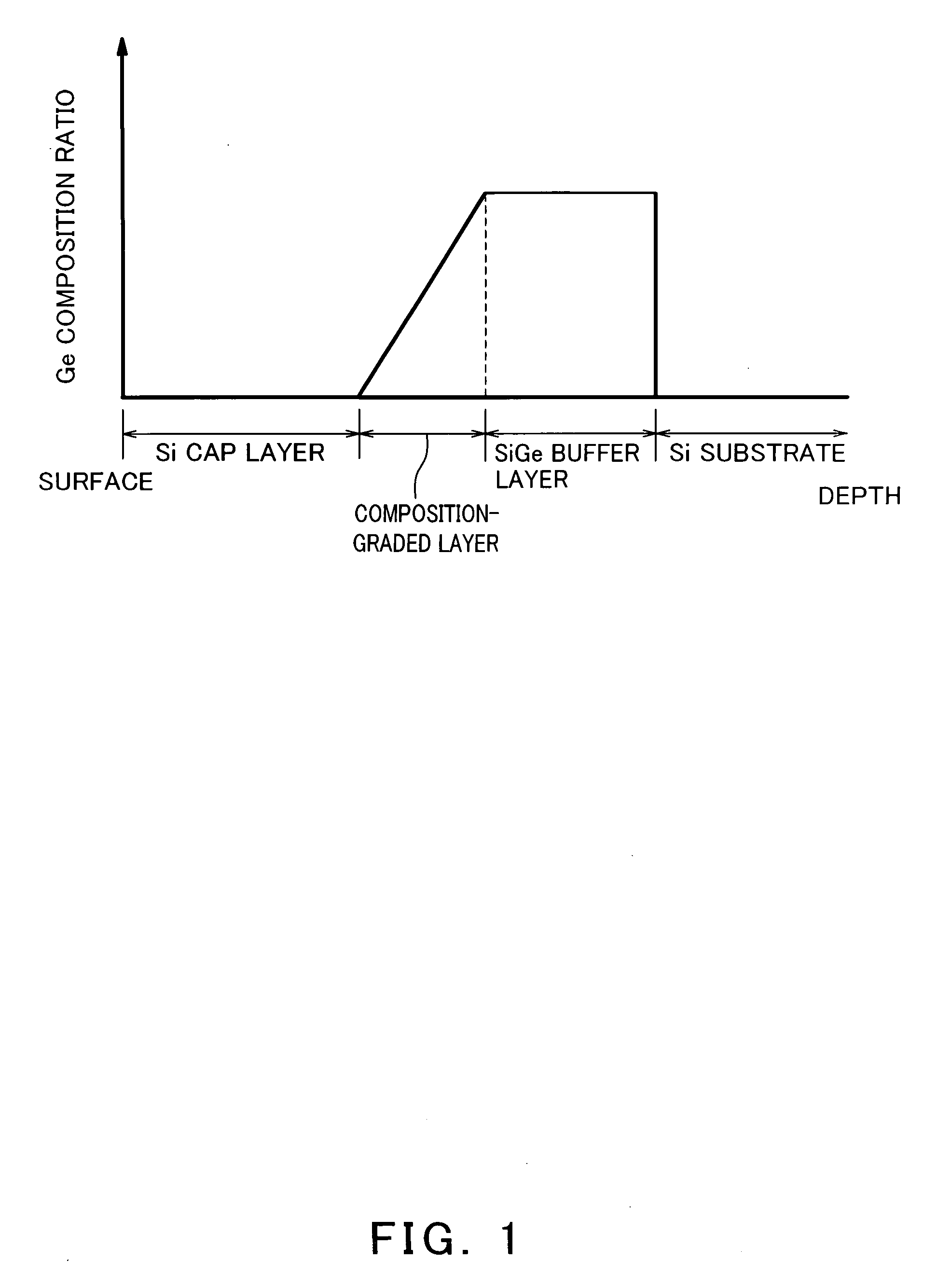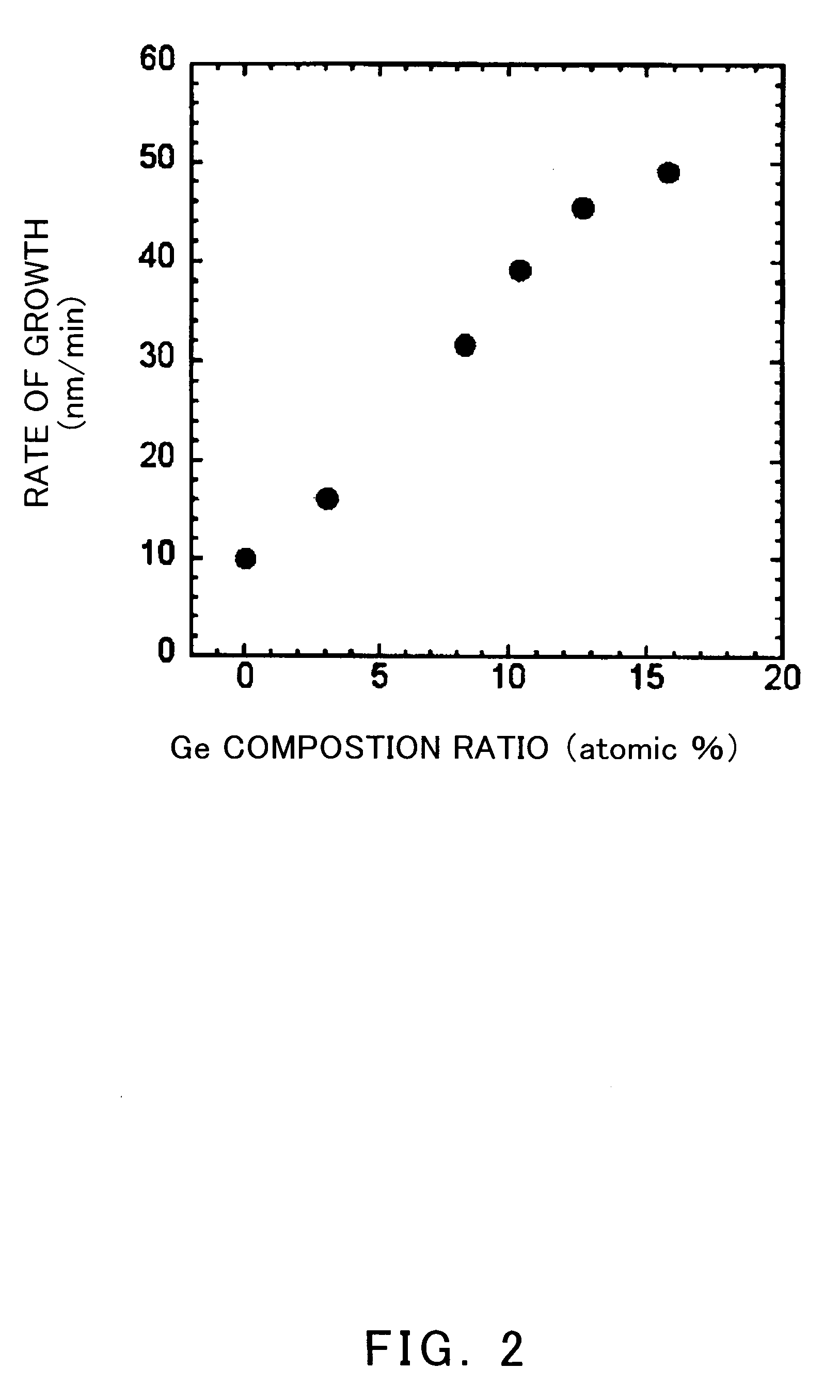Method of estimating substrate temperature
a technology of substrate temperature and temperature, applied in the direction of instruments, heat measurement, thermometer details, etc., can solve the problems of heterostructure device volume production that cannot achieve desired characteristics, rate of growth is susceptible to the temperature of the portion where the reaction proceeds, and the rate of growth is susceptible to the surface temperature of the substra
- Summary
- Abstract
- Description
- Claims
- Application Information
AI Technical Summary
Benefits of technology
Problems solved by technology
Method used
Image
Examples
embodiment 1
[0043] The following description is directed to a method of estimating substrate temperature according to the present invention utilized in the fabrication of an HBT as one of heterostructure devices. For easy understanding, the structure of and the fabrication process for an HBT having a SiGe mixed crystal film (hereinafter referred to as “SiGeHBT”) will be described first.
[0044]FIG. 1 is a diagram showing a graph of a Ge composition ratio profile in the SiGeHBT. In FIG. 1, the ordinate axis indicates Ge composition ratio while the abscissa axis indicates depth from the surface of a semiconductor layer stacked on a Si substrate.
[0045] As shown in FIG. 1, the SiGeHBT is constructed by sequentially stacking a SiGe buffer layer having an invariant Ge composition ratio, a B-doped, composition-graded layer having decreasing Ge composition ratio as it is closer to the surface and a Ge-free Si cap layer on a Si substrate provided with a pattern.
[0046] Such a structure having varying Ge...
embodiment 2
[0097] In embodiment 1, the substrate temperature of the substrate for device fabrication and the rate of growth of the growing layer in the second structure are measured at one point. In embodiment 2, on the other hand, the substrate temperature of the substrate for device fabrication and the rate of growth of the growing layer in the second structure are measured at plural points. By so doing, it is possible to know the distribution of substrate temperature in the plane of the substrate for device fabrication.
[0098] First, the first stage of embodiment 1 is carried out. Subsequently, the second stage of embodiment 1 is carried out to form a second structure and the film thickness of a Si-containing layer is measured with a spectroscopic ellipsometer or spectral reflectometer. The spectroscopic ellipsometer or spectral reflectometer used in this embodiment has a movable stage on which the second structure is placed and hence is capable of measuring the film thickness of the Si-con...
PUM
 Login to View More
Login to View More Abstract
Description
Claims
Application Information
 Login to View More
Login to View More - R&D
- Intellectual Property
- Life Sciences
- Materials
- Tech Scout
- Unparalleled Data Quality
- Higher Quality Content
- 60% Fewer Hallucinations
Browse by: Latest US Patents, China's latest patents, Technical Efficacy Thesaurus, Application Domain, Technology Topic, Popular Technical Reports.
© 2025 PatSnap. All rights reserved.Legal|Privacy policy|Modern Slavery Act Transparency Statement|Sitemap|About US| Contact US: help@patsnap.com



